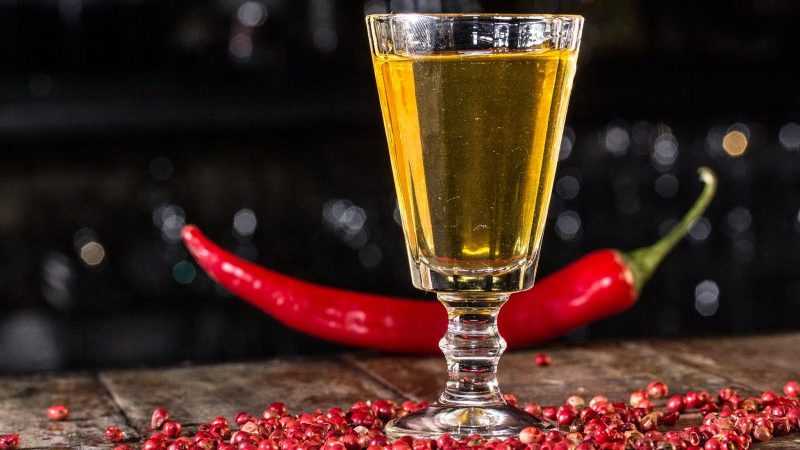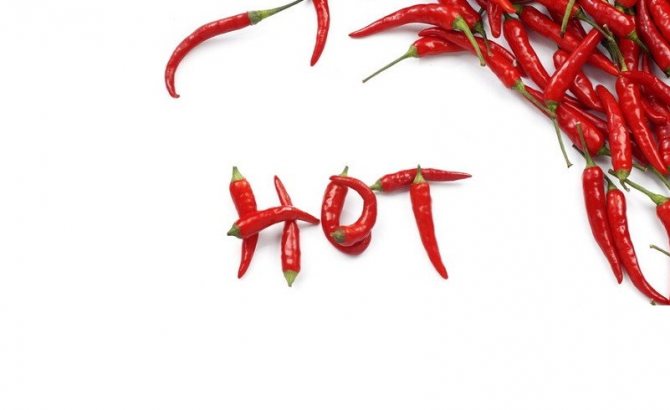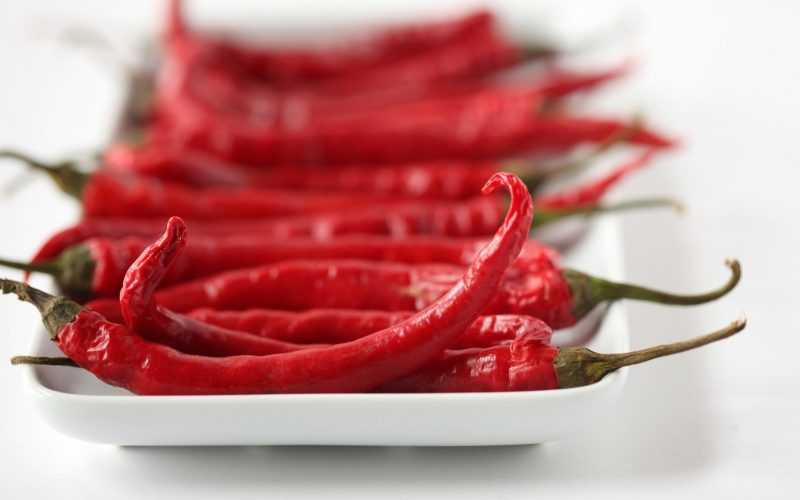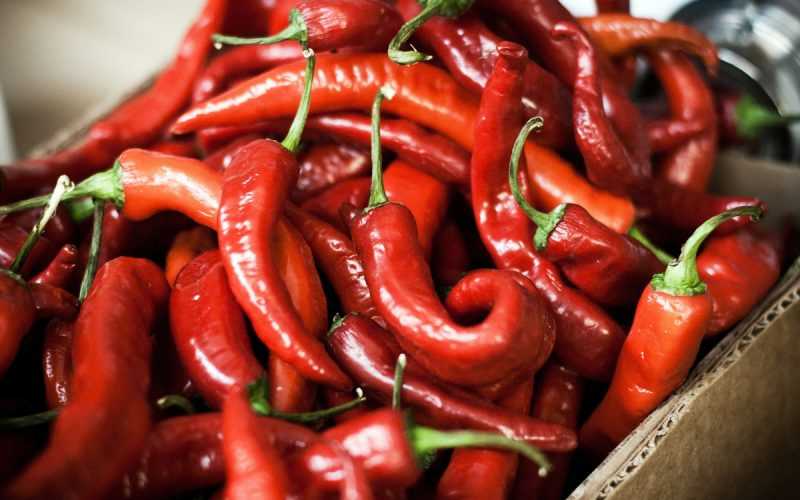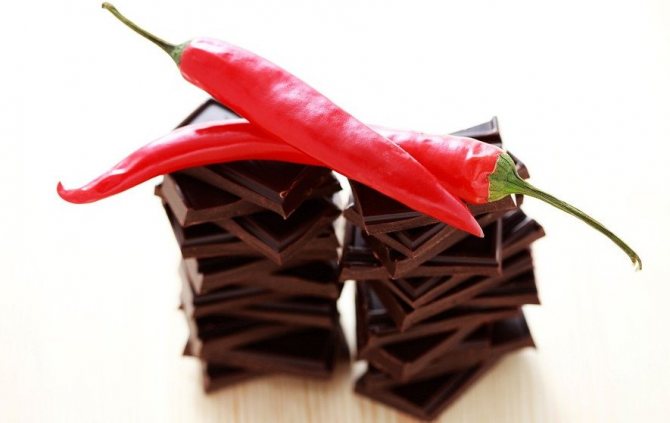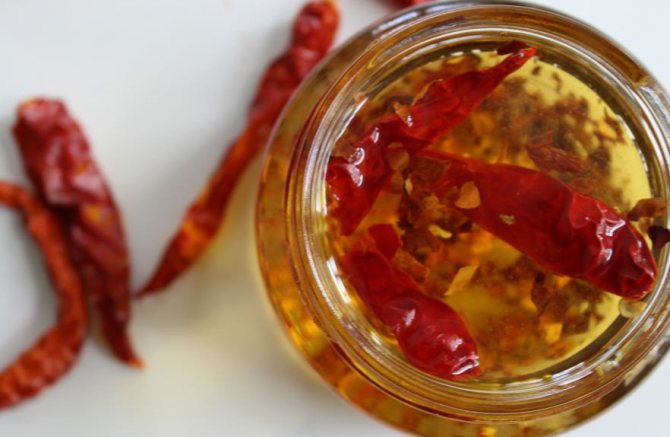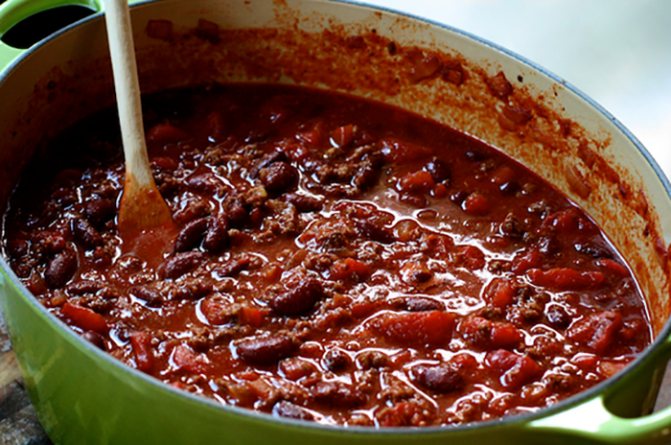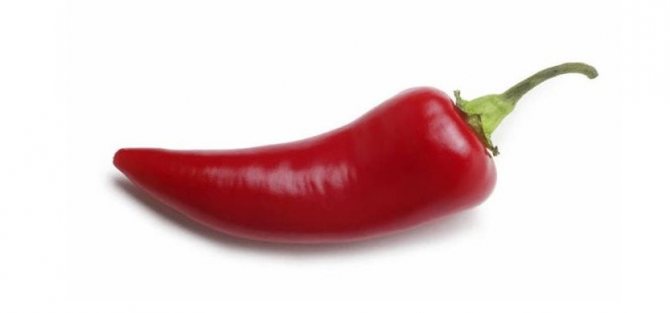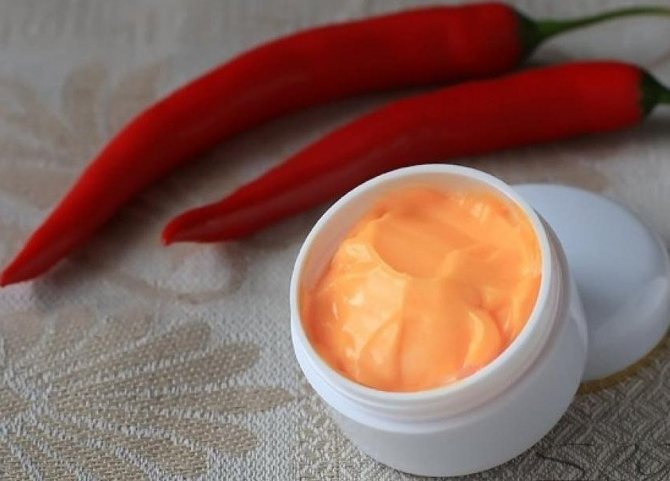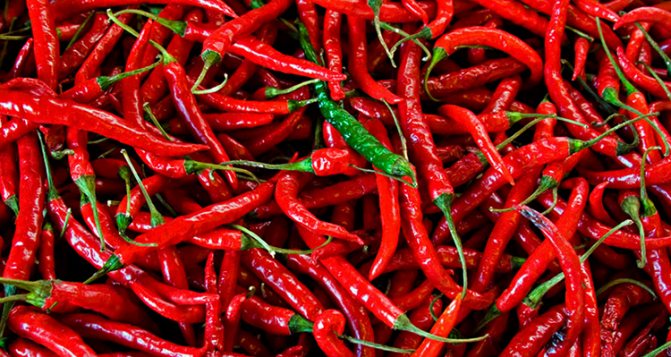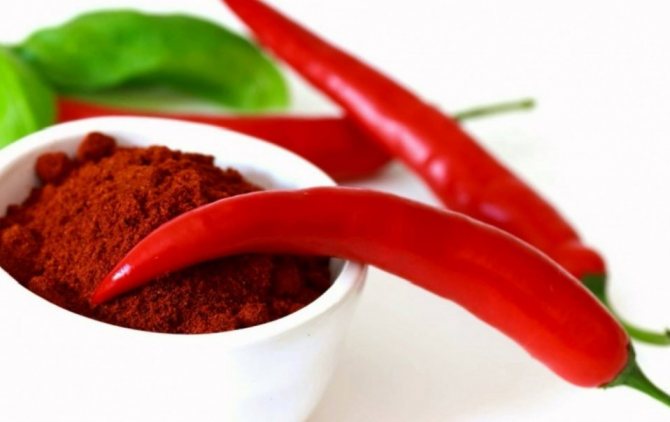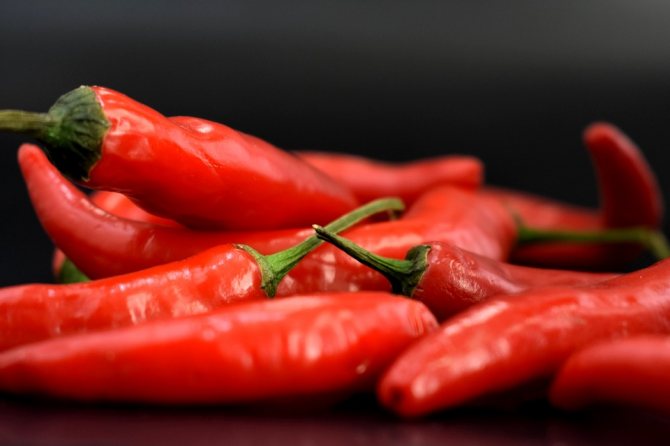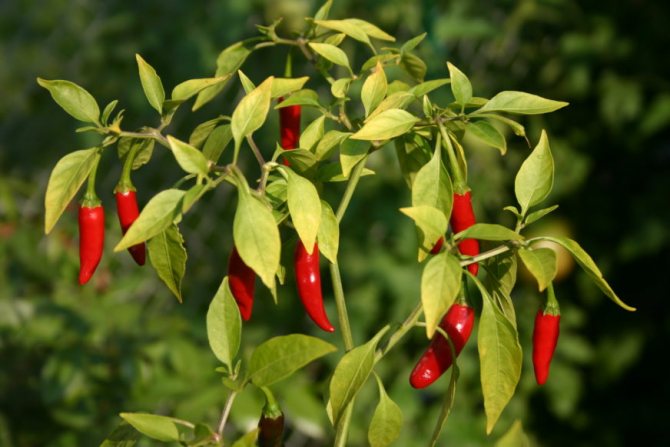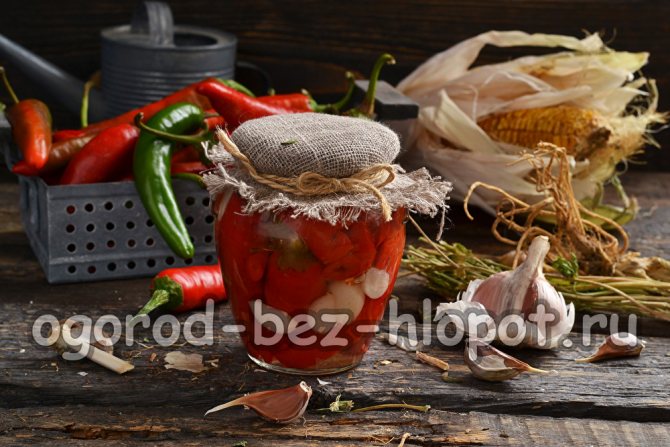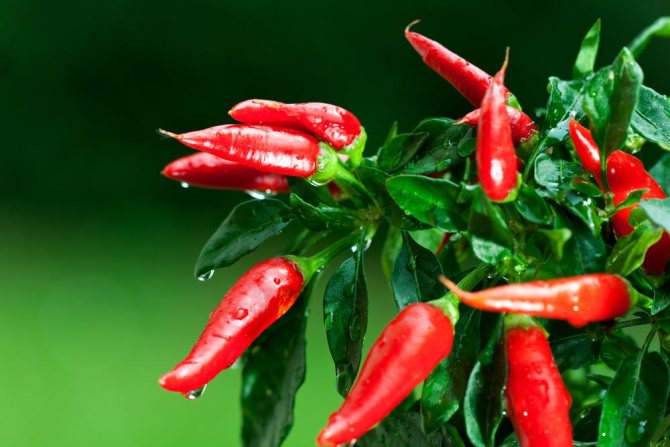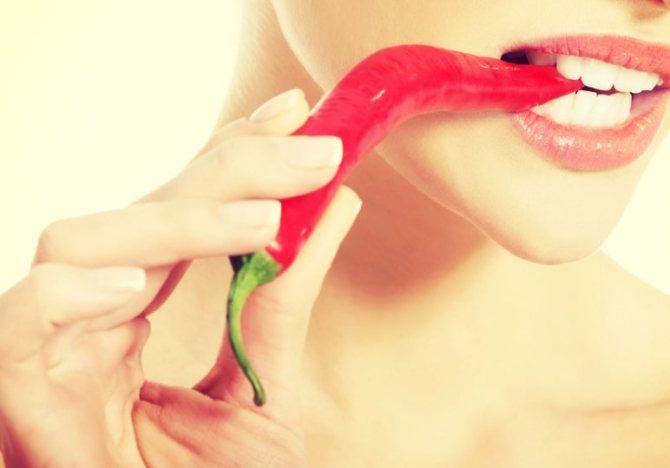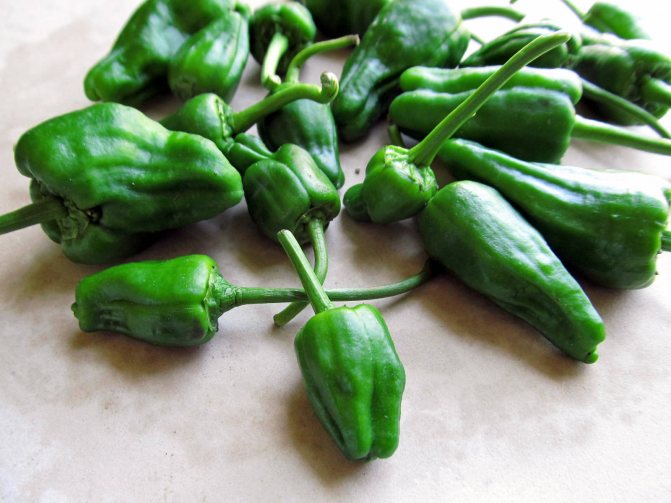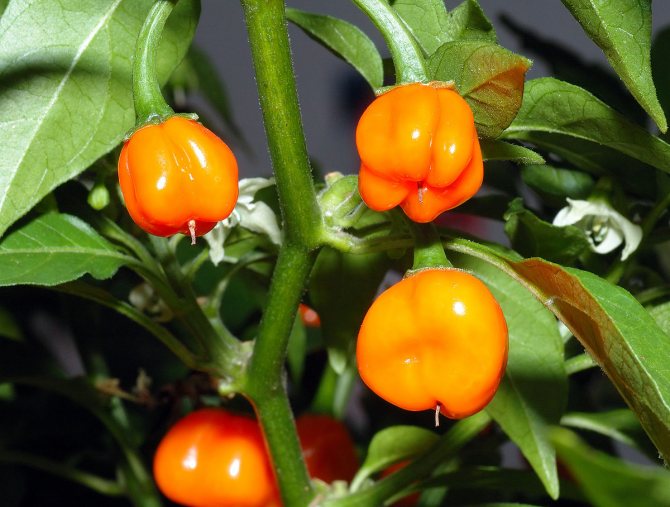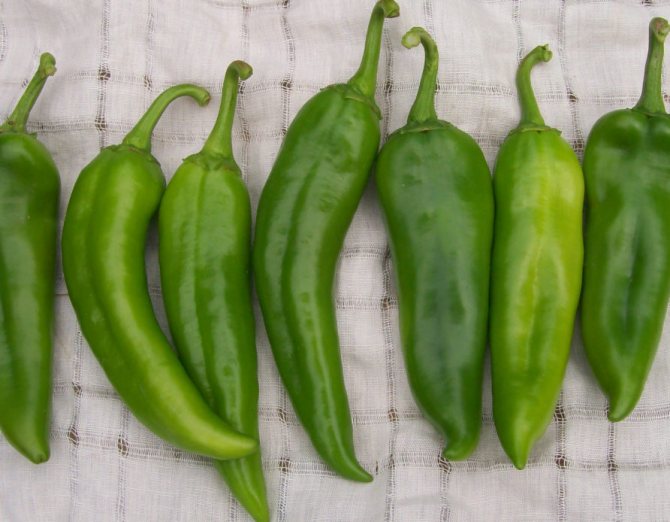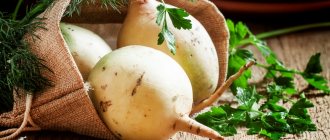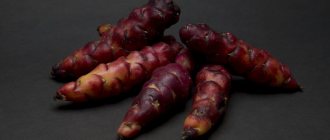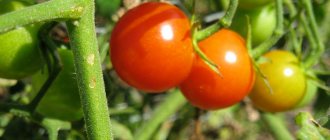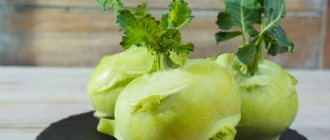Vegetable growing »Pepper
0
1083
Article rating
Seasonings add spice to ordinary dishes, therefore they are present in almost all national cuisines. Chili pepper is one of the most popular spices in the world. Let's analyze the characteristics, harm and benefits of chili pepper.
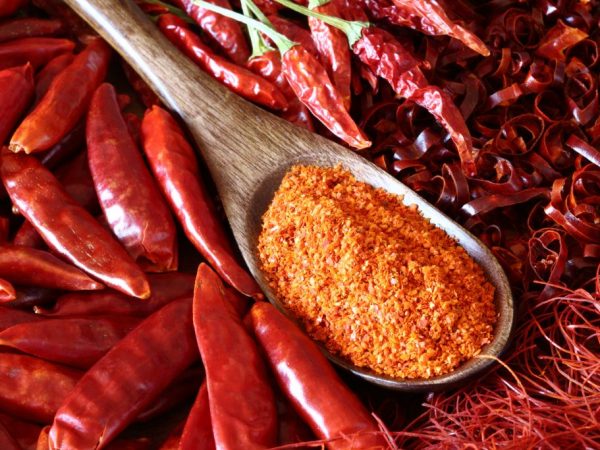
Useful and harmful properties of chili peppers
Description of the plant
Capsicum, or vegetable pepper, belongs to the genus Capsicum and the nightshade family. It is a popular agricultural crop that is often grown both commercially and in home gardens on all continents (tropics, subtropics and temperate climates). The plant got its Latin name - Capsicum - because of the shape of the fruit and life expectancy: сápsа - "bag" + annuum - "one-year". The birthplace of culture is South America, where you can still find wild shrubs.
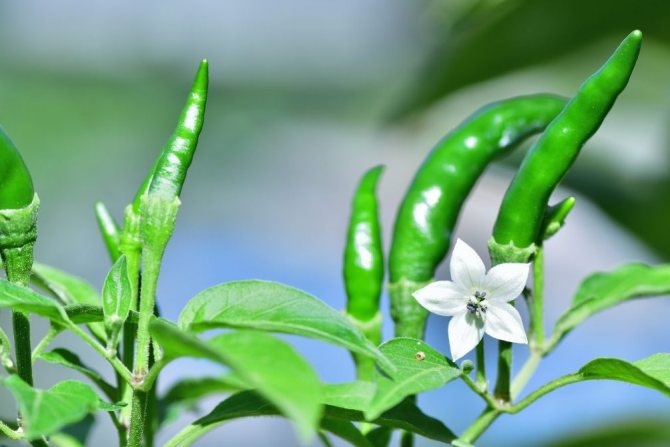

The plant grows from 20 to 120 cm in height. He has simple leaves that grow one by one or several pieces in an outlet. Their color can be green with various shades, up to very dark. The plant blooms with large white or purple flowers. They are located on the bush one by one or collected in bunches. After flowering, fruits are formed in the form of false berries with seeds. They can be different in shape, color and weight.
This is a warm and light-loving vegetable plant that grows well in climatic conditions with temperatures of + 18 ... + 25 ° C on fertile soils. It can be grown outdoors, in a greenhouse, or in a room setting. It is planted in seedlings. And only in the southern regions is it allowed to sow seeds directly into the ground.
Did you know? According to scientists, paprika was first domesticated in Mexico and Guatemala by the ancient Mayans and Aztecs. The representatives of these tribes used a spicy vegetable instead of salt to add flavor to the food they consumed.
Pepper care is traditional: it involves watering, feeding, loosening the soil, weeding, mulching, garter, pinching, preventive treatments against diseases and harmful insects. The yield of sweet varieties is on average 300 c / ha, bitter - 200 c / ha. In greenhouses, about 12 kg / m² can be obtained.
How to cook
Famous English chef Jamie Oliver recommends the use of chili peppers to change the taste of familiar dishes. A spicy vegetable can be pickled and smoked, dried and ground into powder. Depending on the type of spice and the method of preparation, the food will taste differently.
Pepper types:
- Fresh. After removing the inner partitions and seeds, the pulp is added to food.
- Dried. The most popular processing method, which allows you to experiment with different varieties and completely control the process. Fruits are used both whole and ground.
- Freezing. In order to store the spice without problems, they prefer to freeze it. At the same time, the nutritional value and medicinal properties are not lost.
The application vector for chili peppers is extensive. Any dish acquires not only uniqueness of taste, but also usefulness. Knowing the strengths and weaknesses of the spice will help you avoid problems.
The best varieties of capsicum
All varieties of capsicum are divided into 2 varieties: sweet and bitter. Bitter varieties are also referred to as red (hot) peppers. The sweet ones are often called paprika.Bulgarian pepper is also included in this variety.
Some of the best sweet varieties include:
- Gourmet. Fruits ripen early - 95-105 days pass from germination to harvest. The plant forms peppers of medium size and weight (10–12 cm, 80–90 g). They are cuboid in shape. The skin is colored orange. Peppers are characterized by excellent taste and juiciness. In cooking, they are used for universal purposes.
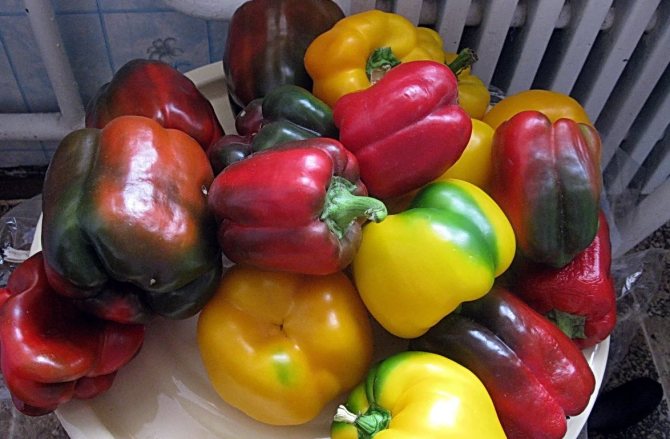

- Fat Cat. The fruits ripen in 105-110 days. They are elongated cuboid. Their skin is yellow, glossy. The mass of one piece is 250–300 g. The pulp is tasty and juicy, with a pleasant fresh smell. The variety is valued for its high and stable yield - 3.6 kg / 1 m², excellent taste and large fruit size.
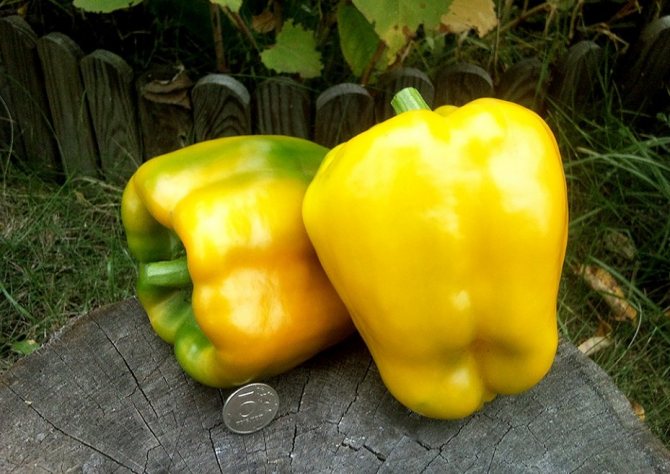

- Amber. The fruits ripen in 112-127 days. Peppers are tied in the form of cones, weighing 90–110 g each. Their peel is smooth, colored orange. The yield of the variety is high - up to 7 kg / 1 m².
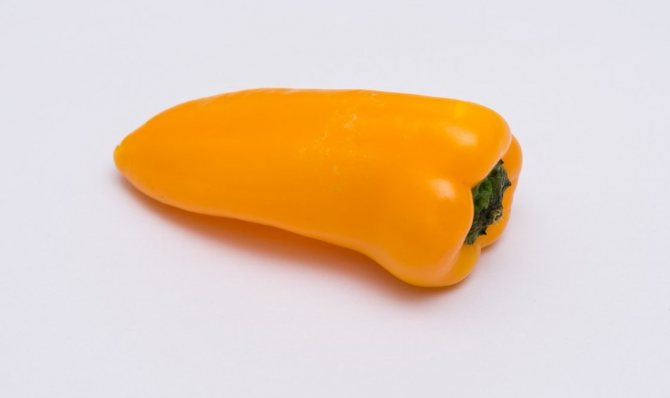

Popular among the spicy varieties are:
- Burning bouquet. Produces fruits in the form of long pods up to 10 cm long and weighing 25 g. They have a fragrant and pungent pulp.
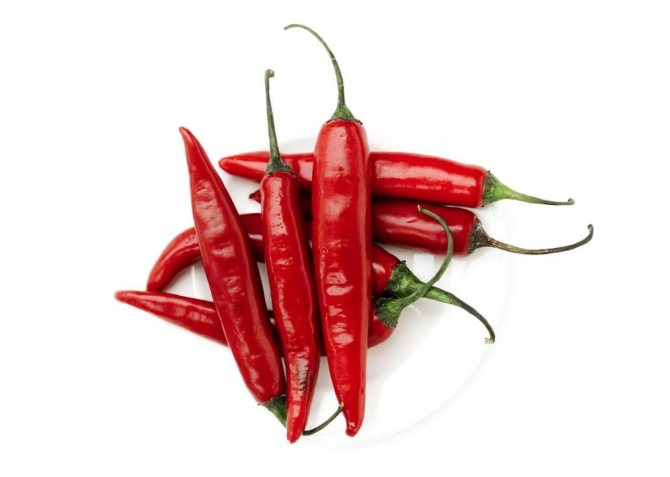

- Chinese fire. Differs in excellent transportability and keeping quality. The fruits ripen in 100 days. The pods are 21–23 cm long and weigh 70 g.
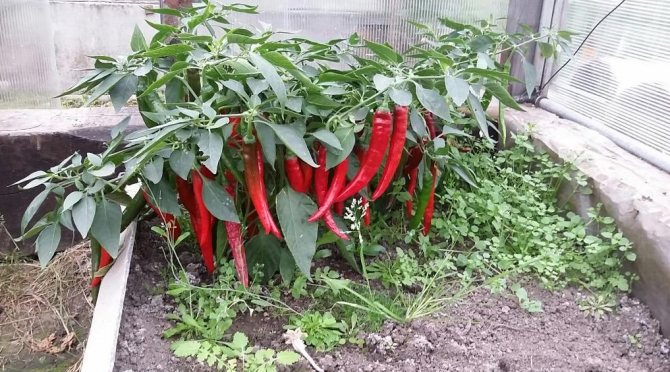

- Jubilee VNIISOK. The growing season lasts 100 days. The pods grow up to 30 cm in length and gain up to 30 g in weight. They have a mild pungent taste and a pleasant aroma.
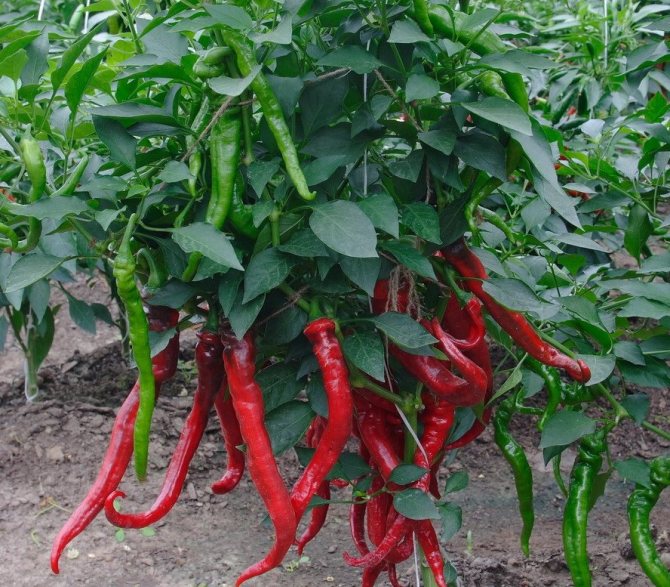

The following varieties are grown in room conditions:
- Indian summer;
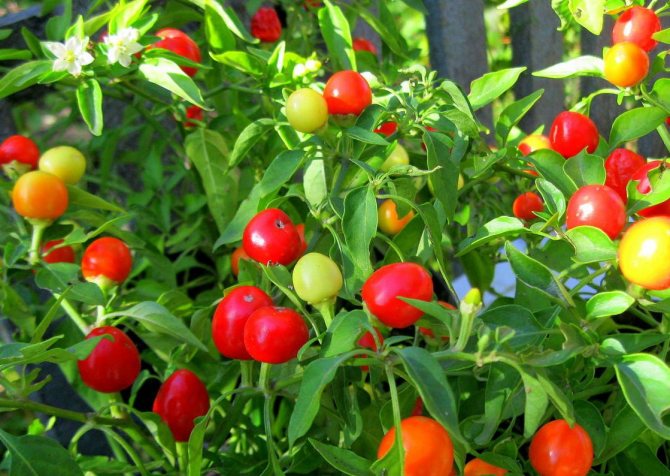

- Bell;
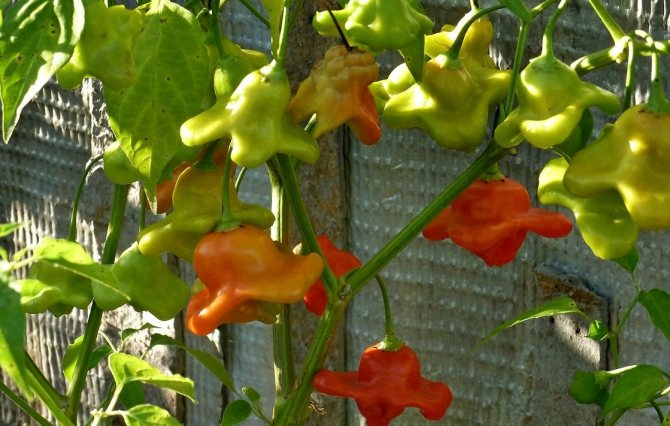

- Tomboy.
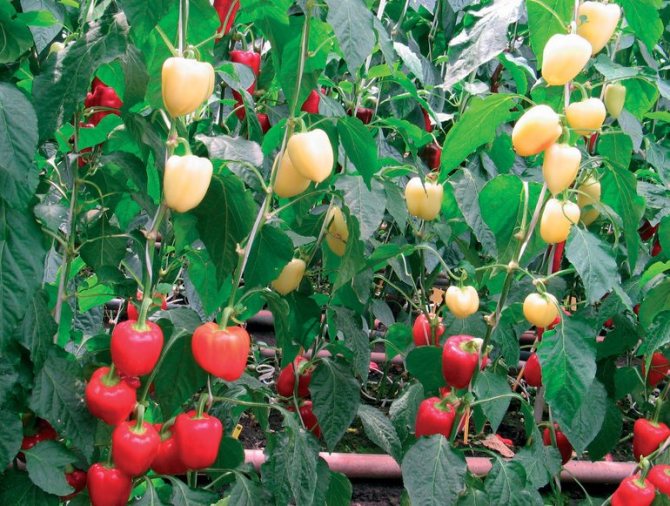

Composition and nutritional value
Capsicum is a real storehouse of valuable elements for humans. Almost all known vitamins are contained in 100 g of a vegetable. It contains especially a lot of vitamin C: in sweet varieties it contains 150 mg (166% of the daily value for the human body), in bitter varieties - 143.7 mg (159.7%). The vegetable is saturated with vitamins A, groups B, E, K, PP.
Of the minerals, the vegetable plant boasts a content of potassium, calcium, magnesium, sodium, phosphorus, iron, manganese, copper, selenium, zinc. The vegetable also contains the alkaloid capsaicin (in sweet varieties it is small, in spicy varieties - a large amount), sugar, essential and fatty oils, saponins. The energy value of 100 g of a sweet vegetable is 27 kcal.
Did you know? Capsicums are included in the list of the 10 most useful foods, which is compiled by experts from the World Health Organization.
The nutritional value of the same amount of the product is as follows:
- proteins - 1.3 g;
- fats - 0.1 g;
- carbohydrates - 5.3 g;
- organic acids - 0.1 g;
- dietary fiber - 1.9 g;
- water - 92 g;
- ash - 0.6 g.
The calorie content of hot pepper is 40 kcal. One pod contains approximately 18 kcal.
The nutritional value of 100 g of hot pepper is represented by the following components:
- proteins - 1.87 g;
- fats - 0.44 g;
- carbohydrates - 7.31 g;
- dietary fiber - 1.5 g;
- water - 88.02 g;
- ash - 0.87 g.
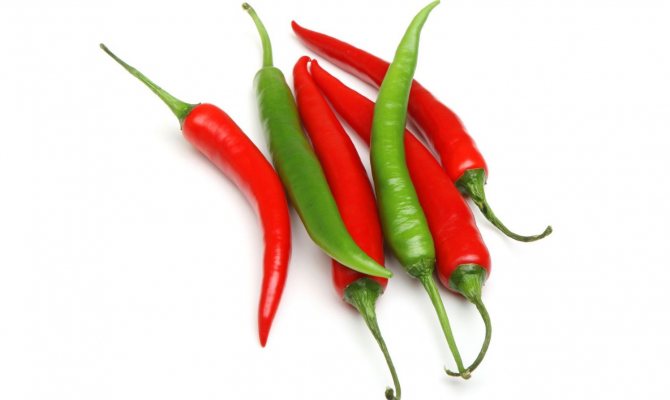

Growing features
Since hot peppers are native to tropical countries, they are naturally a thermophilic crop. It does not tolerate frost at all, and at temperatures below +14 degrees, it stops growing, then the leaves begin to turn yellow and die off. Therefore, it is mainly grown through seedlings, and planted in the ground only when the soil warms up well and there is no likelihood of recurrent frosts.
Hot pepper plants grow rather slowly; seedlings of at least 60 days of age are usually planted in the ground. When planting, the main thing is not to deepen the root collar, it must be at the level of the soil, otherwise the plant will lag behind in growth.
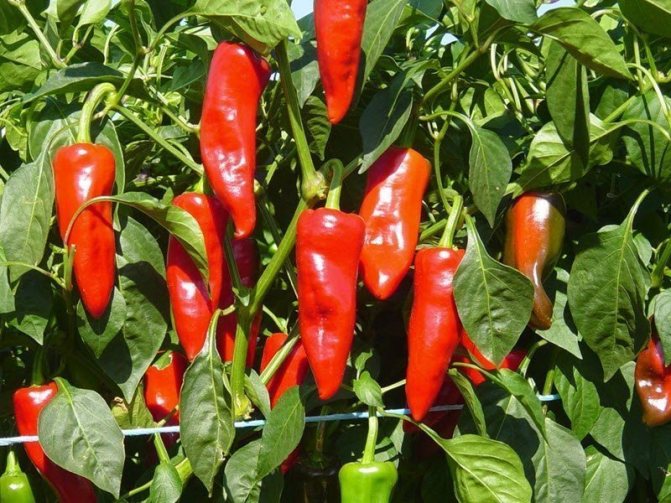

Ornamental hot peppers can be grown in a pot on a windowsill. They are sown immediately with seeds in a pot and are not transplanted. Peppers do not like transplanting very much.Top dressing should include the whole range of nutrients, preferably in the same proportions, for example N16P16K16, so any universal fertilizer will do.
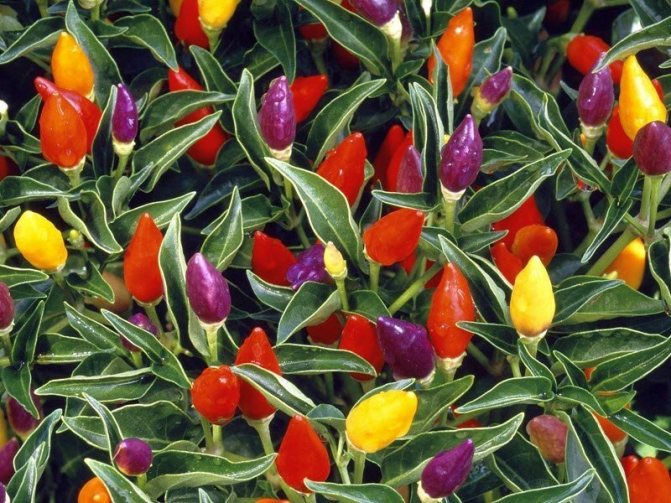

Diseases of pepper and its dangerous pests for spicy varieties are not terrible, since capsaicin, which gives spiciness, protects plants from them. The main thing before sowing seeds is to disinfect them for 20 minutes. in a solution of potassium permanganate (1 g per 100 g of water), while the seeds should turn brown. Therefore, it is quite easy to get environmentally friendly products of this plant.
Capsicum properties
A vegetable can have both beneficial and harmful properties on the human body. There is a category of people who should use it with caution. For some, it is generally contraindicated.
Benefit
- The rich chemical composition of the vegetable plant determines its benefits for the human body. It is appreciated and recommended to be included in the diet due to the fact that it has the following beneficial effects:
- improves the functioning of the immune system;
- activates the secretion of gastric juice and increased appetite;
- improves the contractility of the digestive tract;
- balances the nervous system;
- helps to lower blood pressure;
- speeds up metabolism;
- helps to reduce body weight.
Pepper is advised to use to prevent the development of anemia, thrombosis, heart disease, stroke, osteoporosis, obesity, gastrointestinal diseases, cancer. It is indicated for the elderly to strengthen memory, as well as those who are engaged in mental work and suffering from diabetes.
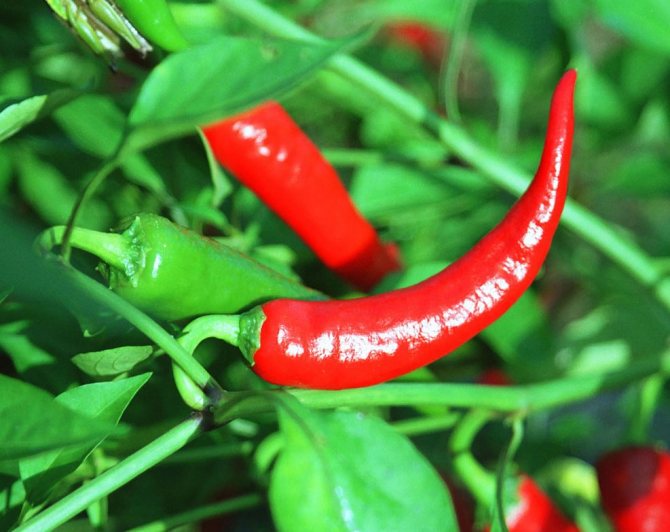

For men
Hot peppers are very useful for men, because one of its known properties is a beneficial effect on men's health.
- A vegetable is capable of:
- improve potency;
- increase testosterone levels;
- cleanse the liver;
- prevent early hair loss;
- increase blood circulation.
For women
Women are also encouraged to consume spicy varieties. They help to improve the emotional and hormonal background, the menstrual cycle, remove edema, reduce weight, and improve mood. During pregnancy and breastfeeding, spicy varieties should not be eaten.
Important! Sweet peppers may appear in the diet of a nursing woman after the baby is 3 months old. A woman should introduce it gradually, starting with small doses, vigilantly monitoring the baby's condition.
Lactating women should also not eat orange and red fruits. But sweet peppers are recommended for pregnant women. It saturates the woman's body, weakened at this time, with elements important for her and the fetus, in particular, calcium, iron, folates.
For kids
Spicy varieties are contraindicated for children. They can lead to severe irritation and burns to the delicate mucous membrane of the mouth and digestive organs. For the first time, a hot vegetable can be tasted only after reaching the age of 12.
Sweet varieties are allowed to be given after heat treatment from 9 months. Fresh vegetables can be added to the menu from 1.5 years of age. It will saturate the child's body with a vitamin and mineral complex, as well as energy, help improve appetite, and improve the peristalsis of the stomach and intestines.


Harm and contraindications
Sweet varieties are undesirable for persons with liver and kidney diseases, coronary heart disease, hypotension, epilepsy, stomach ulcers, gastritis, individual intolerance.
Hot pepper is contraindicated for people with impaired kidney and liver function, with diagnoses of ulcer, diabetes mellitus, hypotension, as well as for pregnant and lactating women, during menstruation, children. The maximum allowable amount of hot vegetables that can be consumed per day is 15 g. In order not to harm the body, it is optimal to eat it 1-2 times a week.
Pepper recipes
1 For the preparation of medicinal ointment from frostbite it is necessary to mix the crushed pepper with zinc ointment or petroleum jelly in a ratio of 1:10.
2 When colds and viral diseases a mixture of 2 tablespoons of ground pepper and 2 tablespoons of melted honey will help. You need to consume the resulting mixture 1 teaspoon 3 times a day with water.
3 In case numbness of the limbs You can mix 4 ml of red pepper tincture and colocynt tincture, 7 ml of arnica tincture and 2 ml of juniper oil. Such a remedy should be taken 4 times a day, 8 drops.
Application
Capsicum has found application in many areas - in cooking, dietetics, cosmetology, traditional and folk medicine.
Important! It is possible to reduce the severity of hot pepper by removing the seeds of the inner plates, as well as heat treatment.
In cooking
Capsicum is actively used by peoples all over the world.
The spicy vegetable is added to:
- seasonings and sauces for meat and fish dishes;
- side dishes of vegetables;
- first courses, cereals and legumes;
- salad dressings;
- vinegar, pickles, vegetable oil.
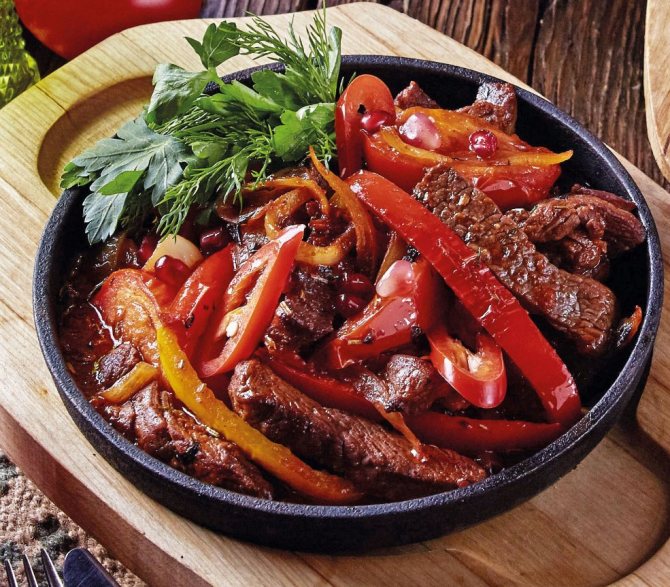

Sweet varieties are used for cooking:
- salads;
- stuffed dishes;
- soups and borscht;
- lecho.
To preserve the capsicum throughout the winter, it is canned, pickled, and frozen.
Important! When preparing dishes and products from hot peppers, you should take care of protecting your hands with gloves. After contact with a hot vegetable, you should not touch your face and eyes with your hands. This is extremely annoying.
In folk medicine
Today, more is known about the medicinal use of hot vegetables. Moreover, it is used not only in folk healing, but also in official medicine.
It is among the ingredients:
- a medical patch prescribed for muscle and joint pain, arthritis, rheumatism;
- tinctures to increase appetite and better work of the digestive organs;
- remedies against malaria and frostbite;
- the drug "Tonsipret" for diseases of the upper respiratory tract.
Homeopaths advise using pepper extracts for cystitis, pyelonephritis, otitis media, acute respiratory viral infections, gastritis with high acidity.
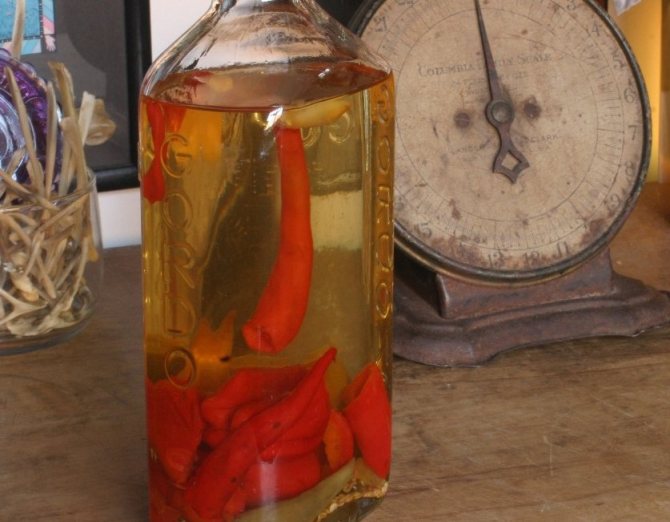

In folk medicine for the treatment of arthritis, genital herpes, enterocolitis, gout, sciatica, dysentery, colds, coughs, osteochondrosis, pepper tinctures, infusions and decoctions are used:
- The infusion is made from ground pods (10 pcs.), Unrefined vegetable oil (250 ml), refined kerosene (250 ml). It is kept for a week. Apply externally.
- For tincture, take alcohol (70%), ground pods in a ratio of 1: 3 and incubate for 3 weeks.
- The broth is boiled from chopped pod (1 pc.) And milk (1 tbsp.) For 2 minutes.
- A remedy made from chopped red vegetables (1 pc.) And honey (1 tbsp. L.) Helps to cope well with a cough.
Bell peppers are also used to treat several health problems. Its juice helps relieve inflammation in stomatitis and gingivitis, solve the problem of an unstable thyroid gland and iodine deficiency. In case of disturbances in the activity of the pancreas, raising the level of glucose in the blood, it is advised to drink 30–150 ml of juice three times a day before meals. In the treatment of arthritis and rheumatism, lotions from pepper tincture with alcohol or vodka are used.
Did you know? Specialists of the Guinness Book of Records in 2013 introduced a pepper called the Carolina Reaper on its pages, as the sharpest type of chili. In 2020, Jamaican Wayne Algenio ate 22 pods in 1 minute.
In cosmetology
Sweet pepper juice can be used topically to lubricate age spots. If mixed with carrot juice, it will be an excellent tool for making imperceptible imperfections on the face. Carrot-pepper juice is also used to get rid of eczema and dermatitis. Spicy vegetable tincture is used to eliminate cellulite. It is rubbed into problem areas or mixed into an anti-cellulite cream.
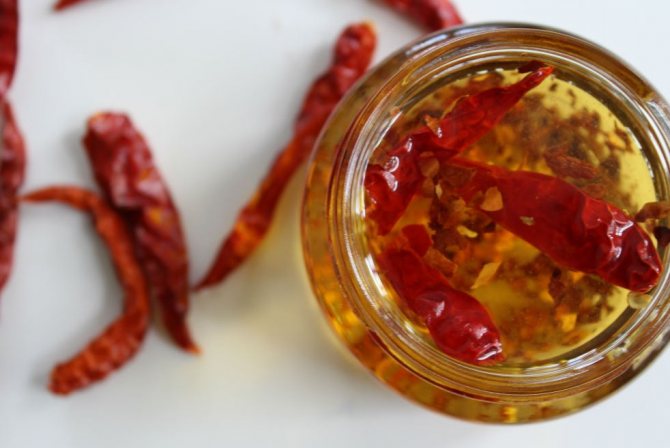

Red vegetable also solves the problem of the delamination of the nail plate well. Hand cream mixture (1 tsp.l.), crushed pepper (0.5 tsp), water (15 drops), citric acid (at the end of the knife) keep in a water bath for 15 minutes with constant stirring. After cooling, they lubricate the nails with it, wrapping them with a film for 20 minutes.
When losing weight
Both sweet and bitter varieties are effective in weight loss. The former are low in calories and high in fiber. They help burn calories, cleanse the body of toxins, accelerate metabolism, and improve the functioning of the digestive tract. They are well digested by the digestive system. But best of all, the problem of excess weight is solved by a burning vegetable.
You will be interested to know about the benefits and dangers of green hot peppers.
Several diets have been developed on its basis. The most famous of them is "Mexican". And the most popular dietary dish is tomato soup with chili peppers. Traditional healers have developed a tincture that allows you to get rid of extra pounds. It is prepared from finely chopped vegetables and alcohol or vodka, insisted for 5–20 days, and then they drink 30 ml for a week half an hour before meals.
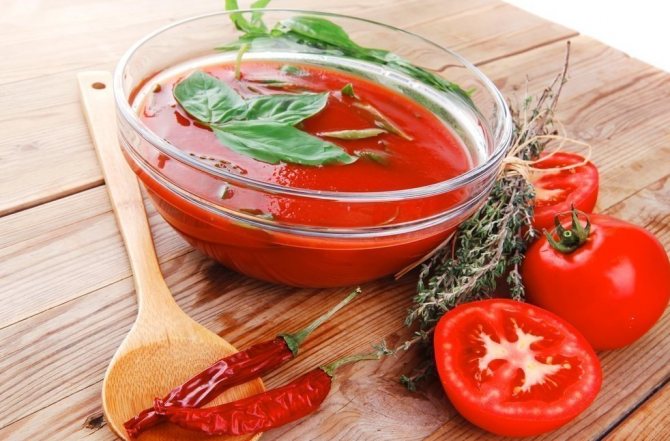

Wraps with a mixture of olive oil (3 tsp), coffee (1 tsp), sea salt (1 tsp), ground pepper (0.5 tsp) also allow you to lose weight. The product is applied to the skin, wrapped in a film and kept for 30 minutes. The course is 8-10 sessions. They are carried out every other day.
To strengthen hair
Hot peppers are used to strengthen the hair. The tincture is rubbed into the scalp to have a positive effect on the hair follicles.
Masks from the following components are also used:
- Pepper tincture (1 tablespoon), castor oil (2 tablespoons), shampoo (2 tablespoons). The mask is applied under the film for 60–90 minutes.
- Insist brandy (100 ml) and ground pepper (10 g) in a dark place for a week. Before use, add boiled water in a ratio of 1:10. Rub into scalp before bed without rinsing. The course is 1-2 months.
Chili pepper - harm and benefit
Chili pepper is a popular seasoning, the benefits and harms of which were already known to the ancient Indian tribes. The benefits of red chili peppers are largely due to the specific spicy component that makes up its composition.
The health benefits of chili peppers
The ancient Aztecs began to grow red chili, which is also called hot, and the name itself - chili - comes from the language of these Indians. Chili peppers contain many vitamins and minerals that have a positive effect on metabolic processes.
The most important ingredient in chili peppers, however, is capsaicin, which gives it its spiciness. This burning substance, getting on the mucous membrane of the mouth, actively stimulates pain receptors, and they, in turn, send a signal to the brain. In response to irritation, the brain produces profuse salivation and heart palpitations, and increases the production of endorphins. All these phenomena are accompanied by a pronounced thermal effect - a person who has tried a spicy dish feels heat throughout the body and sweats. It is thanks to the strong thermal effect that chili pepper is very useful for weight loss.
The most capsaicin-rich parts of the pod are the seeds and septa; if removed, the pungency of the pepper will decrease. If chili pepper is often added to food, the body becomes accustomed to this seasoning and reacts less to it.
Chili has a positive effect on the body with an increased level of sugar and cholesterol. Since this seasoning warms well, it can be used for colds and to relieve pain in sciatica, osteochondrosis, etc.
Chili is harmful to those who consume too much of it. Zealous fans of this seasoning can develop diseases of the gastrointestinal tract, stomach cancer.
The benefits of chili peppers for weight loss
You can lose weight with chili peppers both by eating it and applying it externally.
The thermal effect caused by peppery dishes accelerates the breakdown and assimilation of food, as well as metabolic processes in the body.In addition, nutritionists recommend using chili peppers to reduce appetite - the seasoning owes this effect to the same capsaicin.
Outwardly, for weight loss, chili pepper is used as part of wraps. Crushed chili pepper or ointments with its extract are added to cosmetic oil or nourishing cream, the resulting product is applied to problem parts of the body (abdomen, thighs), wrapped in a thin film and wrapped. It is quite difficult to withstand such a procedure, since the product burns a lot, however, the effect is usually clearly visible - the skin is smoothed, tightened, and the fat layer becomes thinner.
>

